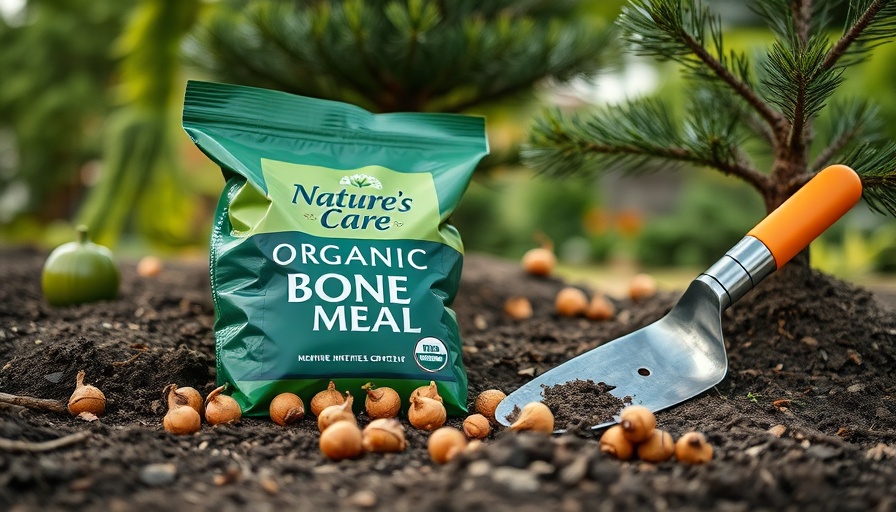
Understanding Bone Meal: A Fertilizer Derived from Nature
Bone meal is an organic fertilizer made from ground bones left over from animal processing. This nutrient-rich supplement is prized for its high phosphorus content, essential for promoting strong root systems and vibrant blooms in various plants. Before diving into its application, it's crucial to assess your garden's unique nutritional needs through soil testing.
The Importance of Soil Testing in Gardening
Soil testing is an indispensable first step before introducing bone meal to your garden. The process involves analyzing the current nutrient levels and pH of your soil, helping gardeners determine if phosphorus is a requirement for their plants. Without testing, there is a risk of over-fertilization, particularly in soils already rich in phosphorus, which can harm beneficial soil microbes and lead to nutrient imbalances.
Using Bone Meal Effectively
If tests confirm a phosphorus deficiency, bone meal can be applied effectively at a ratio of 10 pounds per 100 square feet. It typically takes about four months for soil microbes to process this organic fertilizer, so patience is key when implementing it in your garden. Following manufacturer instructions is imperative, as excessive application can lead to poor plant growth due to nutrient overload.
The Risks and Benefits of Bone Meal Fertilizer
While bone meal has its merits, incorporating it into your gardening practices should be done judiciously. Overuse of phosphorus can disrupt plant health, making soil tests an even more critical component of your gardening routine. It's essential to balance nutrient intake to support not just plant life, but the micro-ecosystem in your soil. Aim for a pH level below 7.0 for maximum phosphorus availability.
Alternatives to Bone Meal
If bone meal isn’t suitable for your soil profile, various organic alternatives can provide the necessary nutrients. Compost, fish emulsion, and well-decomposed manure may offer a more balanced option for those looking to enhance their garden without the pitfalls associated with heavy phosphorus use. Each alternative comes with its own set of benefits, catering to different types of plants and soil conditions.
Conclusion: Making the Most of Your Garden
Utilizing bone meal as part of your organic gardening practices can be a game-changer if applied correctly and at the right time. Understanding your soil’s needs not only helps you avoid potential pitfalls but also ensures that your garden flourishes with healthy plants. Always stay informed about the nutrient requirements of your garden to cultivate a thriving ecosystem. If you’re keen on developing your gardening skills further or seeking reliable resources for soil testing, explore local agricultural extensions or gardening centers.
 Add Row
Add Row  Add
Add 




Write A Comment